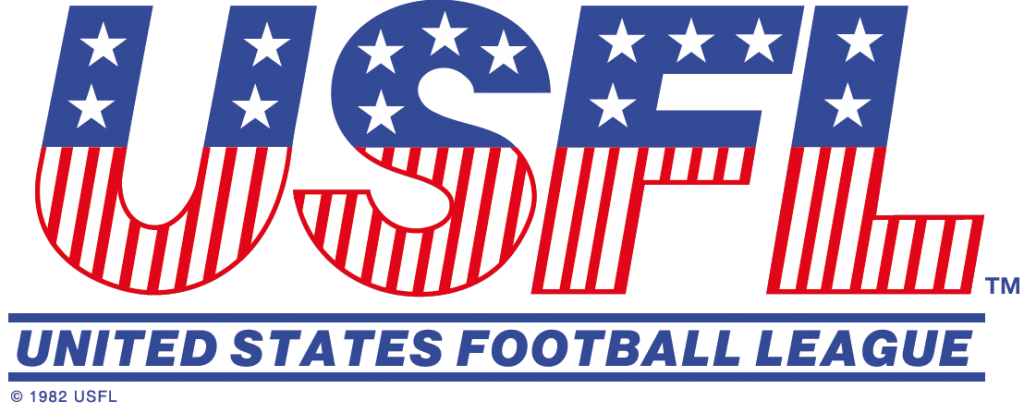
On Thursday, it was announced that the USFL would be returning to the field in 2022. Brian Woods, the CEO of The Spring League, is the man behind the venture. Fox Sports will be a minority stakeholder and will retain rights to air the games. The USFL was initially built as a competitor to the NFL, but lasted just three seasons from 1983-1986.
The new USFL’s plans seem decidedly less grandiose. The press release notes the league will be comprised of eight teams, similar in size to recent spring leagues the Alliance of American Football and the XFL. For some, this resurrection is not a surprise: Apparently, Woods and The Spring League have been acquiring USFL trademarks for some time. However, there is at least one person questioning the legality of those acquisitions.
Anyone who has covered alternative football leagues knows there are two aspects key to survival: (1) A high-profile outlet to show the games; and (2) capital.
We know with Fox Sports being involved, number one is covered. Fox had success with the XFL and worked with Woods on the two most recent Spring League seasons. They’re obviously comfortable with him, and vice-versa. It’s a low-risk gamble for Fox, as they don’t appear to be paying rights fees aside from whatever money, if any, they’re contributing as minority owners of the league.
The “capital” part is what did in the AAF, and to a lesser extent, the XFL (affected by the COVID-19 pandemic). But the USFL may not have such lofty goals; the AAF and XFL were both high-profile endeavors, luring players and coaches with substantial contracts. Can the USFL survive, even thrive, in the area between The Spring League’s low-key existence and the attention-grabbing ways of the others?
Whatever the cost, Woods and Fox have less than a year to get this project off the ground, aiming for a spring 2022 start. The AAF had about the same amount of lead time, maybe more depending on when the USFL kicks off, and some of their struggles can be attributed, directly or indirectly, to that lack of prep time.
Perhaps the USFL can move some players and coaches from The Spring League to the USFL; our own Mike Mitchell speculated that The Spring League would return to its roots as a developmental operation. How TSL and the USFL coexist, if the USFL doesn’t just eventually absorb TSL, is worth monitoring.
All of this is happening amid the backdrop of the XFL’s continued discussions with the CFL. No official word on the state of those discussions has been released from either side since the initial joint statement three months ago.
How does the resurrection of the USFL affect the XFL? Minimally, it would appear, at this point. Getting a year head-start on the XFL will certainly be to the advantage of the USFL (assuming the XFL kicks the can down the road to 2023). Remember though, it would not be unlike the situation the XFL expected to find itself kicking off in 2020, had the AAF been solvent. And the AAF was positioning itself as much more of a competitor to the XFL than the USFL seems to be for now.
There is room for the USFL and XFL to coexist. If Dany Garcia’s grand vision comes to fruition, the XFL will be far-and-away the #2 football organization in America with a year-round foothold and a well-paying TV contract. The likelihood of that occurring remains to be seen, but in the best-case scenario, it’s difficult to see that as a playing field on which the USFL could compete.
There is speculation that a CFL/XFL partnership could lead to the XFL moving from the spring season to perhaps a late spring, early summer kickoff. If that ends up being the case, the USFL and XFL won’t be in direct competition. However, they may still be competing for coaching staffs and players.
We don’t know what the XFL’s compensation structure would look like, but with RedBird Capital in the picture, they certainly have deeper pockets from which to draw than does Brian Woods and the USFL – unless Fox decides to go all-in with the league and try to go dollar-for-dollar with the XFL to vie for talent.
Where competition could get fierce is in the USFL’s placement of its teams. If they continue the hub tradition of The Spring League, the XFL will be in the clear. If the USFL places teams in individual cities, will they use all of the old cities to go along with the trademarks acquired? Or will they try to scoop the XFL and put teams in the most well-attended cities from 2020, like Seattle and St. Louis?
Will the XFL proactively announce what franchises they’ll be keeping in order to stave off a USFL invasion? If they do, that’ll certainly be a “tell” that the XFL is wary of the USFL’s presence. If not, they may see the USFL as nothing more than a pest to be shooed away.
The XFL has a long way to go before they put players on the field, but so does the USFL. Woods having a template in The Spring League and the involvement of Fox Sports makes this more serious than other fly-by-night football enterprises. How serious it is in terms of being a threat to the XFL remains to be seen. If nothing else, the announcement of the USFL appears to potentially complicate the XFL’s eventual return to play.











Loved the old USFL! It would be awesome for it to come back and maybe displaced some of the NFL and xfl woke trash.